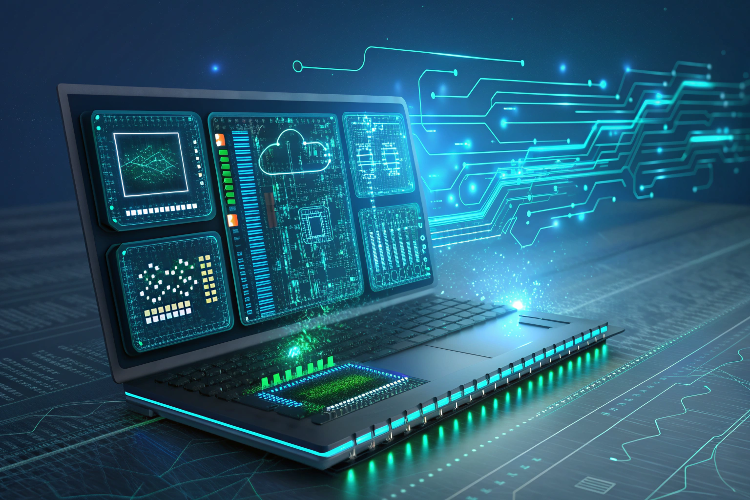Blog
How Machine Learning is Powering Next-Gen Software ?
Artificial Intelligence & Automation ▪ 2025-03-07

In today’s digital age, machine learning (ML) has become a driving force behind next-generation software applications. From enhancing user experiences to optimizing business operations, machine learning is revolutionizing the way software is developed and deployed. Businesses across various industries are leveraging ML-powered solutions to improve efficiency, automate tasks, and make data-driven decisions.
In this blog, we will explore how machine learning is powering next-gen software, its real-world applications, key benefits, and what the future holds for ML-driven innovations.
The Role of Machine Learning in Software Development
Machine learning plays a crucial role in modern software development by enabling applications to learn from data and make intelligent decisions without explicit programming. ML algorithms analyze vast amounts of information, identify patterns, and improve over time, making software smarter and more efficient.
1. Automating Software Development
Traditional software development requires extensive coding and debugging. With ML, developers can automate various aspects of software creation, including:
-
Code generation: AI-powered tools like GitHub Copilot assist developers by suggesting relevant code snippets.
-
Bug detection: ML models identify vulnerabilities and security threats, reducing debugging time.
-
Automated testing: AI-driven testing frameworks streamline quality assurance processes, ensuring robust applications.
2. Enhancing User Experience
Modern software applications prioritize user experience (UX), and ML plays a key role in achieving this by:
-
Personalized recommendations: Platforms like Netflix, Spotify, and Amazon use ML to recommend content and products based on user preferences.
-
Voice recognition and natural language processing (NLP): AI-driven assistants like Siri, Alexa, and Google Assistant provide seamless voice interactions.
-
Adaptive interfaces: Software dynamically adjusts interfaces based on user behavior and engagement.
Real-World Applications of Machine Learning in Next-Gen Software
Machine learning is transforming various industries by enabling intelligent software solutions. Some key applications include:
1. Healthcare and Medical Diagnostics
ML-powered software is revolutionizing the healthcare industry with applications such as:
-
Medical image analysis: AI tools assist doctors in diagnosing diseases like cancer through X-ray and MRI analysis.
-
Predictive analytics: Machine learning predicts disease outbreaks and patient health risks based on historical data.
-
Virtual health assistants: AI-driven chatbots provide patients with medical advice and appointment scheduling.
2. Finance and Fraud Detection
Financial institutions use ML-powered software to enhance security, prevent fraud, and optimize financial processes:
-
Fraud detection: AI algorithms analyze transaction patterns to identify and prevent fraudulent activities.
-
Automated trading: Machine learning models predict stock market trends, enabling algorithmic trading.
-
Credit scoring: AI assesses loan applicants' creditworthiness based on behavioral and financial data.
3. E-commerce and Retail
ML-driven software is reshaping the e-commerce landscape by providing:
-
Dynamic pricing strategies: AI adjusts product prices based on demand, competition, and customer behavior.
-
Chatbots and virtual assistants: AI-powered chatbots handle customer inquiries and support requests.
-
Product recommendations: Personalized shopping experiences increase conversion rates and customer satisfaction.
4. Cybersecurity and Threat Detection
Machine learning enhances cybersecurity by identifying and mitigating security risks:
-
Anomaly detection: AI systems monitor network traffic to detect suspicious activities.
-
Phishing prevention: ML-powered email filters prevent phishing attacks and spam.
-
AI-driven threat response: Security software automatically responds to potential threats in real time.
5. Autonomous Vehicles and Smart Transportation
Self-driving technology relies on machine learning for:
-
Object detection: AI identifies pedestrians, vehicles, and road signs.
-
Navigation and route optimization: ML algorithms analyze traffic patterns for efficient route planning.
-
Predictive maintenance: AI predicts vehicle malfunctions before they occur, reducing downtime.
The Future of Machine Learning in Next-Gen Software
The future of ML-powered software is promising, with advancements in AI leading to even more sophisticated applications:
1. Explainable AI (XAI)
AI transparency will improve, allowing businesses to understand how machine learning models make decisions.
2. AI-Powered Low-Code Development
AI will enable non-technical users to build applications using low-code and no-code platforms.
3. Edge AI and On-Device Processing
ML models will be deployed on edge devices, reducing reliance on cloud computing and enhancing real-time processing.
4. AI Ethics and Responsible AI
Future software solutions will focus on ethical AI development, ensuring fairness, accountability, and bias reduction.
5. AI-Augmented Creativity
ML will assist in creative fields such as content generation, graphic design, and music composition, empowering creators with intelligent tools.

